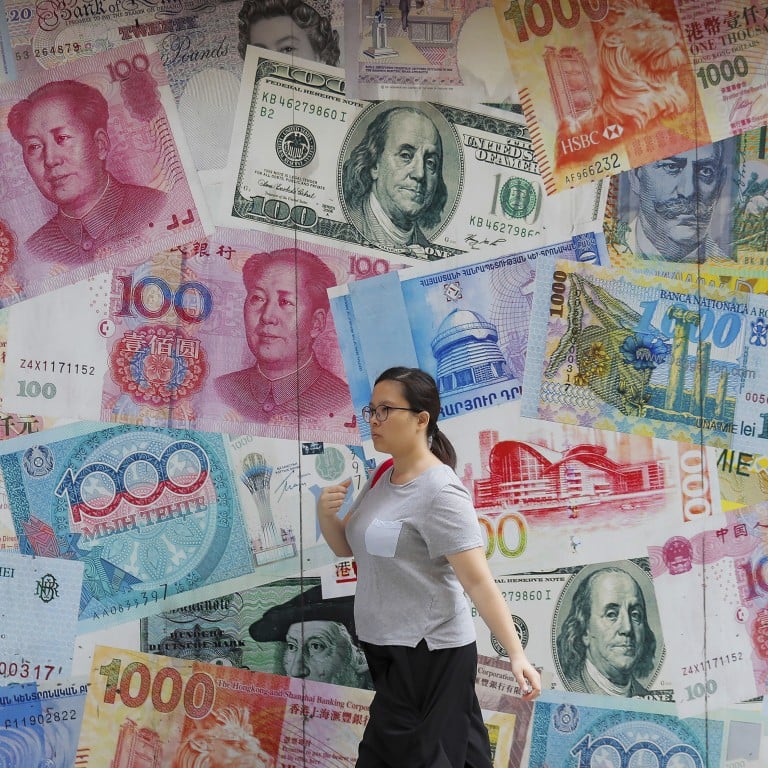
Explainer | What’s the state of China’s US$3 trillion forex reserves war chest, and where is it invested?
- China has the world’s largest foreign exchange reserves, which totalled US$3.22 trillion in January, according to State Administration of Foreign Exchange
- Some have argued China needs to reduce the size of its foreign exchange reserves, while others believe having a sizeable holding remains important
Over the years, China has built a sizeable war chest to defend the yuan, including about US$3 trillion in foreign exchange reserves.
Where does China invest its foreign exchange reserves?
Driven by its high export revenues, China has the world’s largest foreign exchange reserves, which totalled US$3.22 trillion in January, according to State Administration of Foreign Exchange (SAFE).
China’s foreign exchange reserves had stood at US$3.24 trillion in December, having risen from US$3.17 trillion in November, the exchange regulator said.
SAFE, though, does not disclose where it invests China’s foreign exchange reserves.
Besides China’s foreign exchange reserves, the US Treasury data also includes debt holdings by institutional and private investors from China.
The latest data from the US Treasury showed that China held US$782 billion of US Treasury bills in November, making it the second-largest foreign holder behind Japan.
Chinese investors were net buyers of US corporate bonds and had made net purchases of US stocks as of November, according to estimates by Guan Tao, global chief economist at Bank of China International, based on US data.
US stocks had a stellar performance in 2023, with the S&P 500 index gaining 24.3 per cent.
“Due to rising valuations, Chinese institutions’ holdings of US debt and government agency bonds rose to US$1.04 trillion at the end of November, their holdings of corporate bonds rose to US$19 billion, and their holdings of US stocks rose to US$307.5 billion,” Guan said at the end of January.
Has China’s foreign exchange reserve portfolio changed?
In recent years, the size of China’s foreign exchange reserves have been hovering around the US$3 trillion mark, down from its peak of US$3.84 trillion in 2014. Its holdings of US treasuries also began to decline in 2014.
In 2015, a one-off 2 per cent devaluation of the yuan by the People’s Bank of China fuelled depreciation expectations, and an estimated US$1 trillion of its foreign exchange reserves were used to defend its currency.
It is a mistake to equate a reduction in China’s Treasury holdings with a reduction in the share of China’s reserves held in US bonds or the US dollar
The deteriorating trade relations between China and the US have also prompted concerns over Chinese investors’ exposure to US dollar assets.
However, Brad Setser, a senior fellow at the Council on Foreign Relations, believes China’s data does not suggest significant use of its formal reserves between July and September when pressure on the yuan was mounting.
“The only interesting evolution in China’s reserves in the past six years has been the shift into agencies,” Setser said in a blog post in October, referring to agency bonds issued by a US federal government department or by government-sponsored enterprises.
“That has resulted in a small reduction in China’s Treasury holdings – but it also shows that it is a mistake to equate a reduction in China’s Treasury holdings with a reduction in the share of China’s reserves held in US bonds or the US dollar.”
What is the outlook for China’s foreign exchange reserves?
The size of China’s foreign exchange reserves has been a subject of debate within the financial community and Beijing’s policy advisers over the past few years.
China has placed an emphasis on increasing domestic demand and self-reliance, although it has yet to find a new engine of growth to replace exports amid high local government debt level and a prolonged property market downturn.
However, Wang Yongli, former vice-president of the Bank of China, argued in a blog post in 2022 that there is no way to determine a “reasonable” size of a country’s foreign exchange reserves.
Foreign exchange reserves are an important external liquidity buffer, especially for emerging markets
Having sizeable foreign exchange reserves remains important to China, according to Wang, because the yuan is not yet an international reserve currency and the economy relies on external demand.
Meanwhile, Guan at the Bank of China International added that larger is not always better when it comes to the size of foreign exchange reserves.
“Foreign exchange reserves are an important external liquidity buffer, especially for emerging markets. They can significantly reduce the risk of currency crises and are the ballast stones of financial stability,” former SAFE director Guan said in 2022.
“However, [the] marginal effect decreases as the scale of foreign exchange reserves increases, and the opportunity cost gets higher and higher.”

